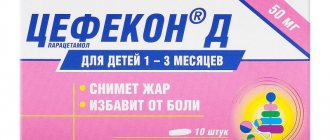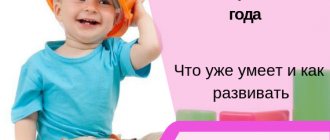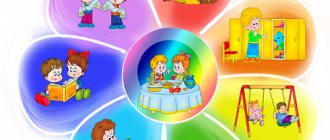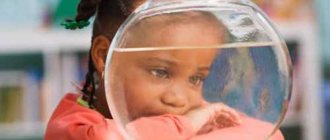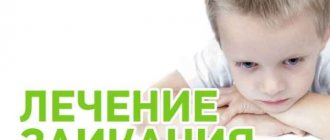Why do children need books?
It would seem that the world for two- and three-year-old children is already full of surprises, discoveries, new products - just have time to look around. Why else burden a child with an additional source of information such as a book? It turns out that at this age a book is not only a source of something new (a new story, a new fairy tale, new heroes), but also a convenient means for other purposes:
- The book teaches new things in an interesting fairy-tale design, with pictures, with the voice of a loved one and the participation of an adult in the cognitive process. The parent takes an active part in reading, guides, emphasizes, focuses on important points, helps to assimilate and understand what is read.
- The book teaches correct behavior and positive actions. In fairy tale form, it leads the child to an understanding of good and evil, good and bad.
- It's about having fun, spending time with loved ones.
- The baby lays the foundations of oral speech and develops a vocabulary.
It will be useful to discuss with your child everything you have read or individual stories and poems. It is necessary to find out whether he understood what was happening, as well as the sequence of actions and the logic of actions. The smaller the baby, the more often you need to stop.
The choice of books the child will read next depends on how responsibly the adult approaches the choice of reading material. These first children's books instill good artistic taste, develop a desire to read and learn new things.
What books should children 2-3 years old read?
A 2-3 year old child is already familiar with the basic concepts of the world around him: the names of objects, animals, colors and seasons. The purpose of books at this age will be to help further expand the child’s horizons, increase his vocabulary, and develop an understanding of various life situations.
Books for children 2-3 years old can be divided into the following categories:
- Russian folk tales;
- Poetry;
- Works of Russian authors - fairy tales, short stories, comics;
- Foreign classics;
- Stories about nature;
- Educational books.
The presence of books of different types allows you to develop a child comprehensively, to show him various aspects of life and creativity. Many books for children 1-2 years old continue to be relevant.
What should the book be?
At two or three years old, the baby already knows the main animals, birds, objects, and seasons. Therefore, it is easy to involve him in the fascinating world of reading, where all this is present in parallel with concepts still unknown to the child.
Genres
It’s good to have books of different genres in your home library:
- Poems that are easy to read and memorize.
- Fairy tales, both old, well-known, and modern.
- Educational interesting books with tasks.
- Coloring pages.
- Books in which you can touch something by touch (kinetic perception is also included).
- Puzzle books (where you need to assemble easy puzzles).
- Editions with moving parts or three-dimensional illustrations. This is an auxiliary function of attracting attention, training concentration, and entertainment.
With such an assortment, you can always choose exactly the book for the evening that your child wants to read. If he constantly wants to listen to the same ones, it’s worth finding out what exactly he likes about them. If there are illustrations, you can expand the library with publications with pictures by this particular artist; if there are characters, look for other stories about these characters.
List of books for children 2 years old
In books for children from two to three years old, the coincidence of several parameters at once is extremely important - author, work, illustrations and format.
So where to start?
Series “Planet of Childhood” by AST Publishing House: 1. K. Chukovsky – “Tsokotukha Fly”, “Fedorino’s Mountain”, “Riddles”, “Barmaley”, “Moidodyr” (there are also drawings by S. Bordyug and N. Trepenok , as well as with the drawing by V. Suteev - choose to your taste); 2. S. Marshak – “Children in a Cage”, “The ABC in verse and a picture”, “The Tale of a Smart Mouse”; 3. S. Mikhalkov “Trezor”; 4. V. Suteev - “One, two - together!”, “Christmas tree”, “About a hippopotamus who was afraid of vaccinations”, “Sack of apples” (all stories, drawings by the author); 5. F. Khitruk “Toptyzhka”; 6. S. Muradyan “Zayushkina’s fur coat” (art. V. Suteev), “Mushroom-teremok”, “Geese-swans”, “Kolobok”, “Turnip”, “Zayushkina’s hut”.
The publishing house “AST” can also recommend: 1. A. Barto – “Toys”, “Rope”; 2. K. Chukovsky - “Chicken”; 3. T. Bokova – “Giraffe and Boa Constrictor”, “Miracles for the New Year”, “Confused Bunny”, “Mouse’s Dreams”, “Rain and Rain”; 4. S. Marshak “Luggage”; 5. P. Sinyavsky “Our Piglet”; 6. A. Usachev “Tails”.
From the publishing house “Rodnichok” I recommend fairy tales: 1. “Masha and the Bear”; 2. “Baba Yaga”; 3. “Tereshechka.”
Simply an excellent series “Funny Stories” from the publishing house “Mosaika-sintez”, author – Elena Yanushko. The following books were published in the series: 1. “Funny stories about animals”; 2. “Funny stories about friendship”; 3. “Funny stories about my day”; 4. “Funny stories on a walk.”
The publishing house “Adonis” publishes a wonderful series of “Baby Books”: 1. V. Borisov “The Best Mother”; 2. I. Novikova “Hedgehog-hedgehog and uh-huh”; 3. “Winter” series “Frost-Red Nose”.
In the series “Poems for Kids” by the publishing house “Flamingo” I especially recommend: 1. Petr Sinyavsky - “Green Pharmacy”, “Tasty Alphabet”, “Strange History”; 2. Alexey Krylov - “How the rooster was treated.” “Cat Vasily.”
Also from “Flamingo” I recommend paying attention to the “Poems in Pictures” series, the “Cheerful Friends” series and the “Lullabies for Babies” series (especially I. Gurina and her “Sleepy Tale”).
A good series of folding books by I. Terekhova from the publishing house “Karapuz” - our favorites were “Who is the Fish Afraid of?” and “Who is the bunny afraid of?”
Next is a list of books that can be conditionally classified into the age category of two and a half. In the already familiar series “Planet of Childhood” from the publishing house “AST” I really liked the books: 1. S. Marshak “Funny Poems and Fairy Tales”; 2. V. Berestov “Poems for reading at home and in kindergarten”; 3. S. Mikhalkov “We are going, going, going”; 4. M. Plyatskovsky “Sun for memory” (art. V. Suteev); 5. V. Suteev “Fairy Tales”; 6. A. Marshak “Ladybug”; 7. “The most favorite fairy tales of kids” (“Turnip”, “Teremok”, “Hen Ryaba”, “Chicken”, “Three Kittens”, “The Fox and the Mouse”, “Visiting Cheburashka”; 8. “100 favorite poems) kids.”
A successful “travel” series from the publishing house “Samovar” “For the little ones” (for example, “Kindergarten”, “Burenka and Company”, “Brothers and Sisters”, “Bayushki-Bayu”, etc.)
From publications outside the series, pay attention to: 1. S. Marshak “A Quiet Fairy Tale”, publishing house “AST”; 2. Tamara Kryukova “Little Hedgehog”, “Aquilegia-M”; 3. Anna Pecherskaya “About kind and friendly animals”, “Bustard-plus”; 4. “Misha is looking for a place to sleep,” publishing house “Azbuka-Atticus”; 5. Alexey Laptev “Pik, Pak, Pok” publishing house “Melik-Pashayev”; 6. Vitaly Bianki “The Fox and the Mouse”; 7. Irina Tokmakova – “Let's play! Poems”, “The Sun Walks in a Circle”, “Poems”, Eksmo Publishing House; 8. Mikhail Yasnov “Visiting the Pignosaurus”, series “Artists for Children”, “Amphora”; 9. One of the best collections of nursery rhymes “Rainbow-Arch”, publishing house “Octopus”; 10. A. Kozhevnikov - “Battlers”, “Big and Small”, “Who Lives Where”, series “Book for Baby”, publishing house “Astrel”.
Among modern foreign publications for ages 2+, I recommend: 1. Michael Rosen “Let's go catch a bear” from the publishing house “Pink Giraffe”; 2. Lynley Dodd “Tishka the Trickster”, publishing house “Pink Giraffe”; 3. Angela McAlister, Charles Fuge “There you are, Wombatik!” Publishing house “Azbuka”; 4. Sarah Nash “The most tender hugs in the world!” Publishing house “Mikko” (“Mikko”); 5. Laura Numeroff “If you give a mouse a cookie”, “Pink Giraffe”; 6. Julia Donaldson “The Gruffalo” and “I Want to Go to Mom!”; 7. Lars Klinting Series about the beaver Castor, publishing house “World of Childhood Media”; 8. Robert Munch “Thomas and the Overalls”, “Eterna”. You can also try reading Sven Nordkvist, the first book in the series “The story of how Findus got lost when he was little” holds attention better than others (Publishing World of Childhood Media).
Of the educational programs for children aged two years and older, I would recommend: 1. Series “For the very little ones” by the publishing house “Karapuz”: a) “Visiting the Bunny”; b) “Who has what kind of mother?”; c) “Bunny in the country”; d) “Who is handsome among us?” e) “Games with mom for every day.” This publishing house also has collections in hardcover: a) “The Dream Book about that same Bunny, about birthdays, about big and small and quiet poems”; b) “The Great Book about the Bunny.” 2. Series “School of the Seven Dwarfs”, 2+ (for classes with children from 2 to 3 years old), “Mosaic synthesis”: a) “Finger painting”; b) “Plasticine pictures”; c) “Color, shape”; d) “One-many.” 3. All kinds of “finger painting” and “palm painting” are a good way to have fun. There are many options (for example, the “Your Baby Can Do It” and “Little Artist” series from the Mosaika-Sintez publishing house, the “Finger Painting” series from the “Dragonfly” publishing house). 4. In the “Little Artist” series from the publishing house “Mosaic-Synthesis” there is a cute book-game “Hide the Picture”. 5. Water coloring books from the “Magic Brush” series from the publishing house “Timoshka” are quite expensive, but after “coloring” the pictures in them are very bright. Girls will love coloring pages about Cinderella, Snow White and the Little Mermaid. 6. “Smart books” for 2-3 years, publishing house “Makhaon”. Of the thin books I liked the most: a) “The Obedient Pencil”; b) “Tasks for the mind”; c) “Numbers and numbers.” Their collections are simply excellent - “Tests” and “Developmental Tests”. 7. Gita Stasheskaya “Kalyaki-malyaki. Creative set for the little ones”, “Speech”; 8. Boris Zakhoder “Shaggy ABC”; 9. “A Primer for Kids” ed. “School of geniuses.”
The list was compiled by Vera Gorshkova .
Share
Tweet
Class
Share
We are in social networks
How to choose?
Nowadays the variety of books is enormous: publishing houses produce beautiful, colorful materials. They are a pleasure to look at, not just to read. But on the other hand, it has now become much more difficult to choose a really good book. To choose a useful book that your child will want to read, you need to take into account the following points:
- Plot and conciseness . At this age, long stories are tiring. The child may forget the characters, the beginning of the story, and other events, especially if they read for several days. The plot of the stories should be clear, simple, and logical. Then it will be easier for the parent to explain the cause-and-effect relationships in the plot, and then in life. Threw it - broke it, pushed it - offended it, lost it - was left without it. Repeatable stories work well. For example, the well-known Kolobok, who talked to everyone he met. This helps children remember faster, and they also really enjoy this slow, repeating sequence.
- Illustrations . A child wants to see something beautiful, natural, and understandable. A two-year-old child does not have such a strong imagination to imagine characters or events on his own. The pictures are needed to help him translate the words into a live performance.
- Realism . Stories should be real, the way they could be in everyday life. The characters have understandable emotions, and the actions they perform are logical and simple. There should be enough fabulousness in the narration and illustrations so that the book is not boring. However, at the same time, do not separate the essence of the story from reality.
- Classic . It's best to start with time-tested classics first. That is, the works of those best authors of children's literature who have long been included in the category of recommended reading. Then you can gradually include modern authors, various collections, and books with the alphabet. Also, start preparing your three-year-old for kindergarten with the help of educational books.
- Print quality, paper quality . Unfortunately, the higher the quality of printing and color reproduction, the more expensive the publication will be. But don’t skimp: dangerous printing inks can harm your baby’s health both by smell and by remaining on the palms of the hands. Poor quality production will cause you to throw out old books more often and then buy new books, so there will be no savings as a result.
Before showing the book to a child, an adult should look through it himself. This is necessary in order to evaluate how well the pictures are made, whether the texts are interesting, whether there are any errors and whether it will be useful.
Read in a way that makes it interesting
If a child does not like the process of reading and new books, it means that the adult is doing something wrong. In addition to the book itself, the way the parent recites plays an important role.
Therefore, when reading to children, adults should:
- Be interested in the reading process and the plot no less than the baby himself. It is worth putting aside your affairs (especially gadgets). We need to set aside time to communicate with the child and the book. With their emotions and comments on what they read, the parent also adds color to the imaginary world of the book they read.
- Communicate . At the same time, discuss the plot, the tests that the hero goes through, what he sees or feels. This helps the child make the world of the book even more realistic and interesting, and the reading process itself becomes a real holiday.
- Let the baby actively listen . He needs to ask questions, comment, and show pictures. All this speaks of his involvement, and not that he does not know how to listen or remain silent.
If the child is tired, wants to sleep, or is not in the mood, then it is better to postpone reading for another time. You can also read easy material “for falling asleep” or nursery rhymes. Don't force your child to study with books if he doesn't want to. Reading should evoke only pleasant emotions.
List of literature for children from 2 to 3 years old
Tatyana Yalova
List of literature for children from 2 to 3 years old
First junior group.
Fiction . _ Repeatedly read and tell works of fiction provided for in the program for children of the second group of early age.
To teach children to listen to folk songs, fairy tales, and original works. Accompany reading by showing toys, pictures (flannel graphs, tabletop theater characters and other visual aids, as well as teach listening to a work of art without visual accompaniment.
Accompany the reading of short poetic works with playful activities. Provide children with the opportunity to finish words and phrases when the teacher reads familiar poems.
Encourage attempts to read the entire poetic text with the help of an adult. Help children over 2 years and 6 months play a well-known fairy tale. Involve children in looking at pictures in books, encourage them to name familiar objects, show them at the request of the teacher, teach them to ask questions: “Who (what)
this?",
"What does it do?"
.
Retell to children the contents of simple plot pictures. Offer to reproduce the actions (movements)
of the character (
“Show how chickens peck at grains, how a girl eats soup”
).
Draw children's attention to a child looking at a book on his own initiative.
For reading to children
Russian folklore Songs, nursery rhymes, chants.
“Our Masha is small.”
;
"Our ducks in the morning."
;
“The cat went to Torzhok.”
;
“Chicky, chicky, chicky.”
;
“Sunny, bucket.”
;
“Oh doo-doo, doo-doo, doo-doo!
A raven sits on an oak tree" ;
“Because of the forest, because of the mountains.”
;
“Cucumber, cucumber.”
;
"Egorka the Hare."
;
“A fox was running through the forest with a little box.”
.
Russian folk tales.
"Kids and the Wolf"
, arr. K. Ushinsky;
"Teremok"
,
“Masha and the Bear”
, arr. M. Bulatova.
Folklore of the peoples of the world
"Three Merry Brothers"
, trans. with him. L. Yakhnina;
"Kotausi and Mausi"
, English, arr. K. Chukovsky;
"Boo-boo, I'm horny"
, lit. arr. Yu. Grigorieva;
"Slide, slide, slide"
, Belarusian, arr. L. Eliseeva;
“Oh, you little bastard.”
,
“You, little dog, don’t bark.”
, mold., trans. I. Tokmakova.
Works of poets and writers from different countries.
D. Bisset. "Ga-ha-ha!"
, trans. from English N. Shereshevskaya;
P. Voronko. "New things"
, trans. from Ukrainian S. Marshak;
S. Kaputikyan. "Masha is having lunch"
,
“Everyone is Sleeping”
, trans. from Armenian T. Spendiarova.
Works of poets and writers of Russia
Poetry.
A. Pushkin. “The wind blows across the sea.”
(from
“The Tale of Tsar Saltan.”
);
M. Lermontov. "Sleep, baby."
(from the poem
“Cossack Lullaby”
);
3. Alexandrova. "Hide and Seek"
;
A. Barto. "Bear"
,
“Elephant”
,
“Horse”
,
“Ship”
,
“Truck”
(from the series
“Toys”
);
“Who Screams How”
;
A. Barto, P. Barto. "Roarer Girl"
;
V. Berestov. "Sick Doll"
,
"Kitty"
;
A. Vvedensky. "Mouse"
,
"The Driver's Song"
;
B. Zakhoder. "Hedgehog"
;
G. Lagzdyn. "Cockerel"
,
“Bunny, bunny, dance!”
;
S. Marshak. "The Tale of the Stupid Mouse"
;
E. Moshkovskaya. “Order”
(abbr.)
;
N. Shkuleva. "Fox tail."
,
“The cat was inflating the balloon.”
;
N. Sakonskaya. “Where is my finger?”
;
G. Sapgir. "Cat"
;
K. Chukovsky. "Confusion"
,
"Fedotka"
.
Prose.
L. Tolstoy. "Three Bears"
,
“The cat was sleeping on the roof.”
,
“Petya and Misha had a horse.”
;
V. Bianchi. "The Fox and the Mouse"
;
N. Pavlova. "Strawberry"
;
V. Suteev. "Who said "meow"
.
—
How to read?
• Turn reading into a ritual enjoyable for your baby. For example, do this before bed - always at the same time.
• If you start reading a story to your baby, and he falls asleep or gets distracted, then next time you will have to start from the first page. It is still difficult for such young children to remember and combine different episodes of one story in their heads.
• Don't be lazy to read the same thing over and over again if your little conservative asks for it. Use children's love of repetition to teach poems and stories by heart.
• Don't be afraid to take on texts with words unfamiliar to your child. Firstly, most likely, he understands much more than you think. And secondly, expanding your vocabulary will greatly spur the development of speech.
What to read?
• Short stories. Let them cover one event or several, but occurring linearly, that is, one after another.
• Short poems (4-12 lines)
.
• Poetic riddles.
• Animals and toys are still at the peak of popularity. But now the cheerful story about “ko”
, - now he needs some kind of relationship, interaction between the characters.
What to buy?
• Books with large and very simple illustrations that correspond to the text.
• Look for books that allow your child to do things on his own—put on stickers, color pictures.
• Give preference to durable and inexpensive publications; the time for reading rare books will come later.
Important! Read for 10-15 minutes a couple of times a day. Independent reading, or rather the child’s viewing of pictures, should ideally take place under your supervision and take at least 5 minutes.
